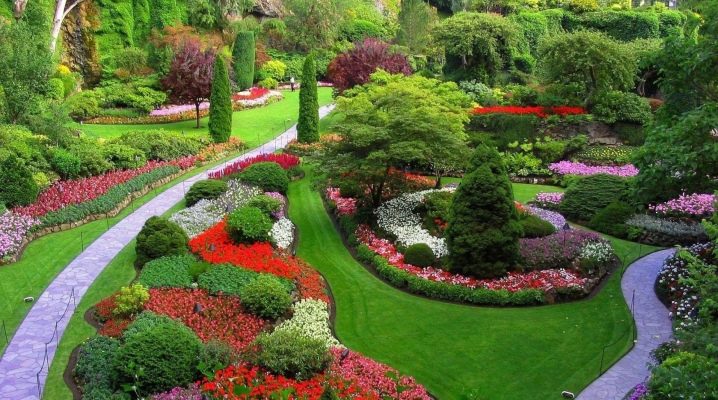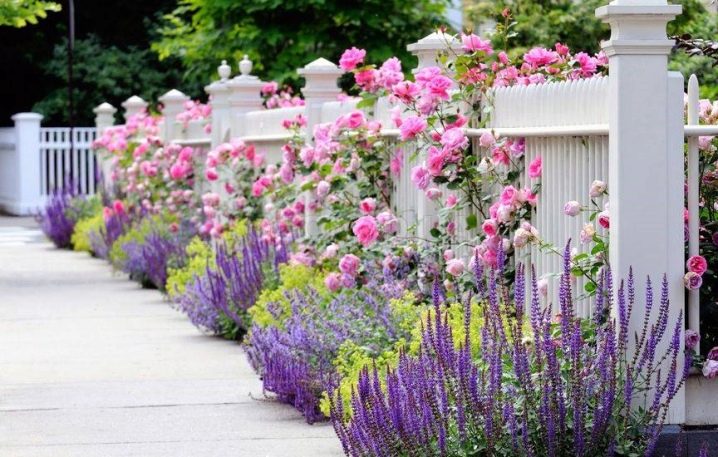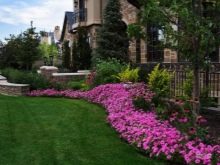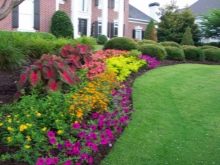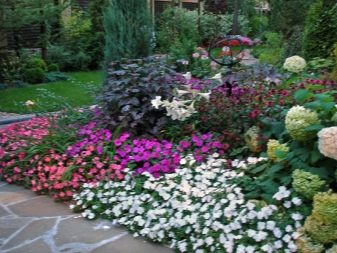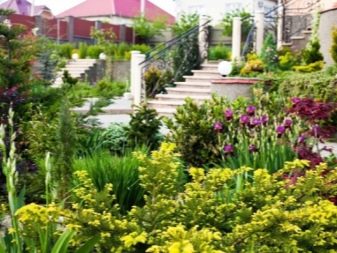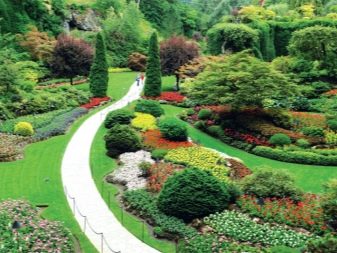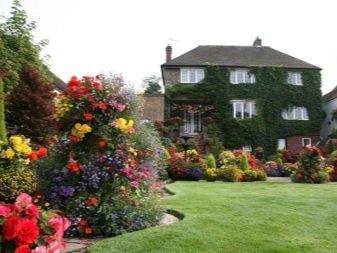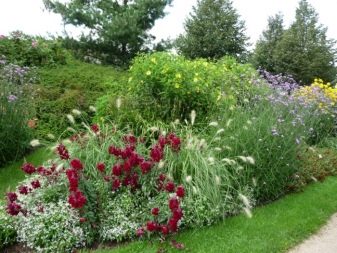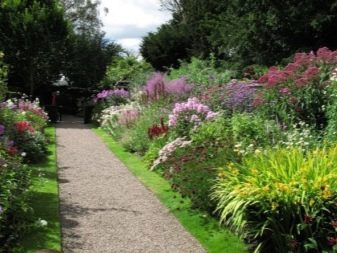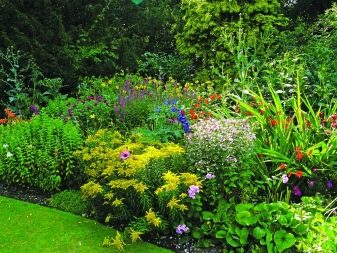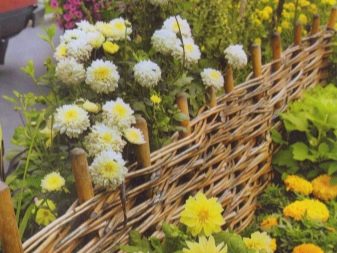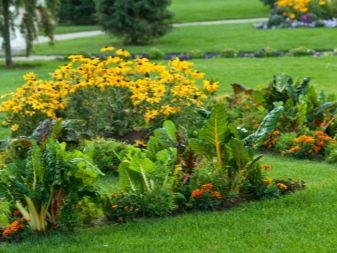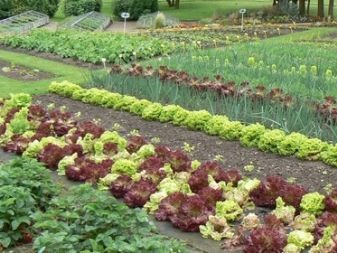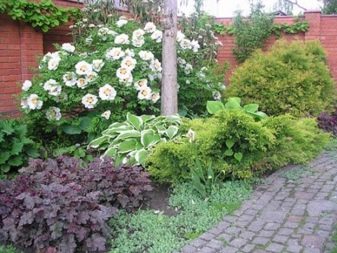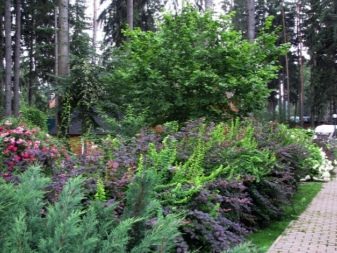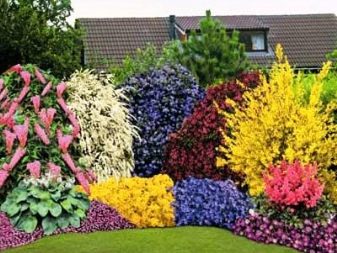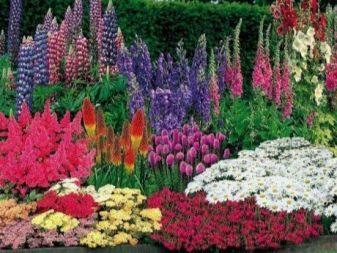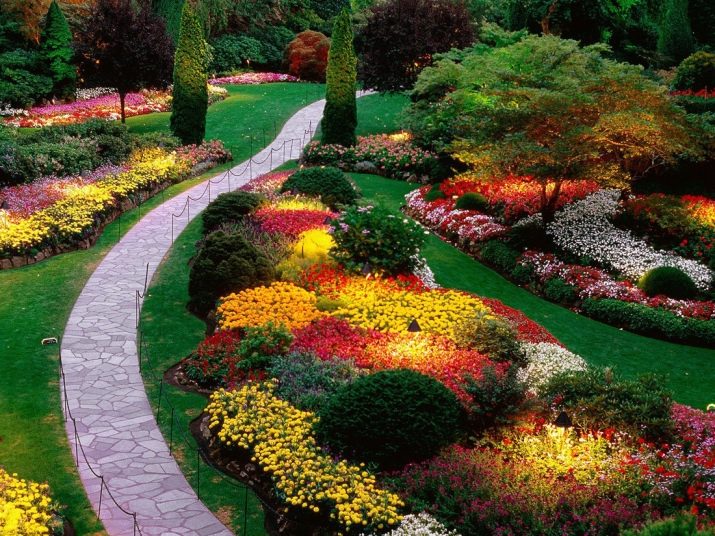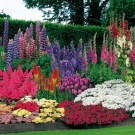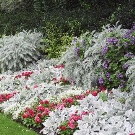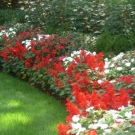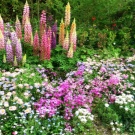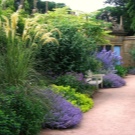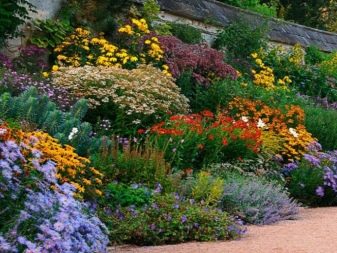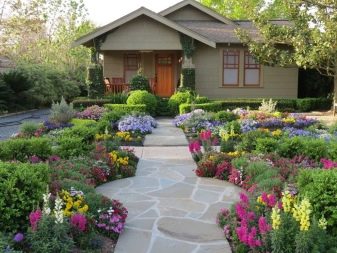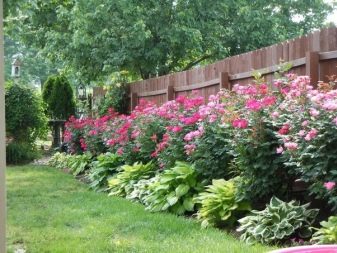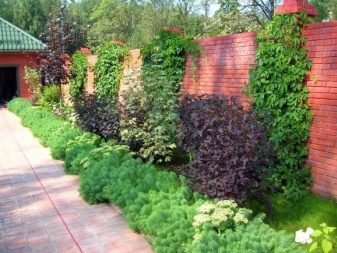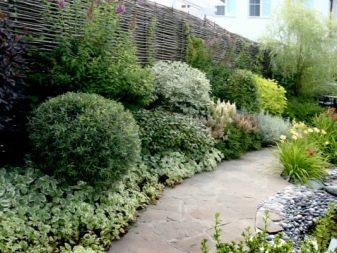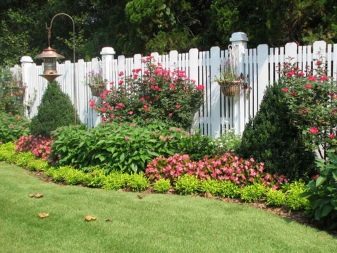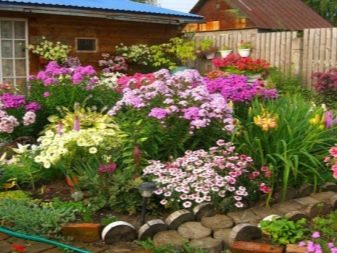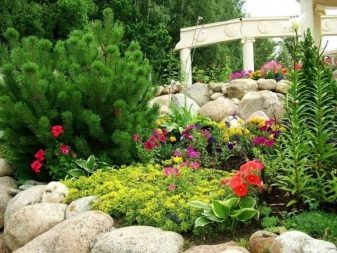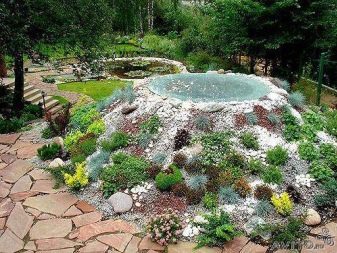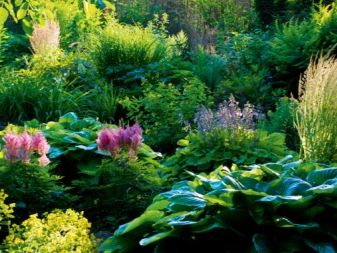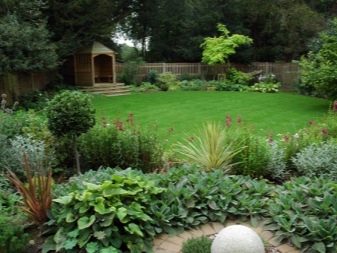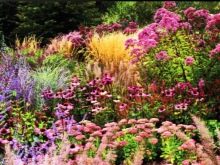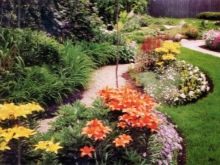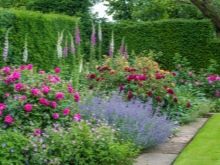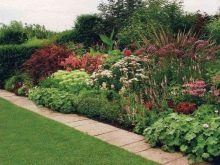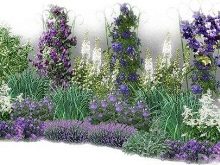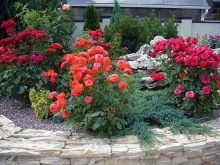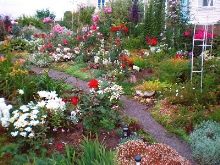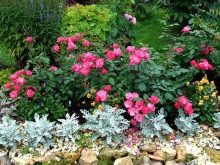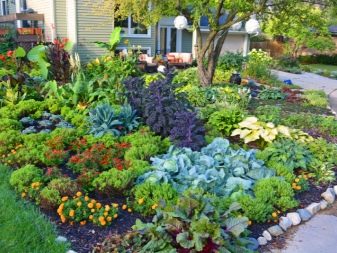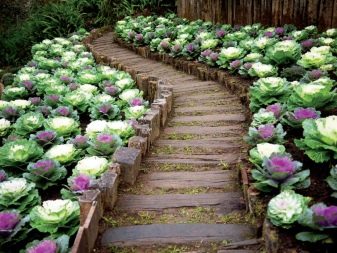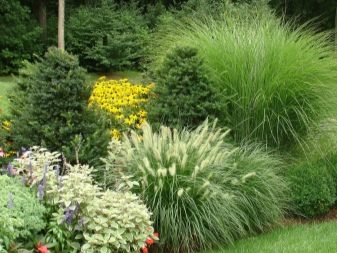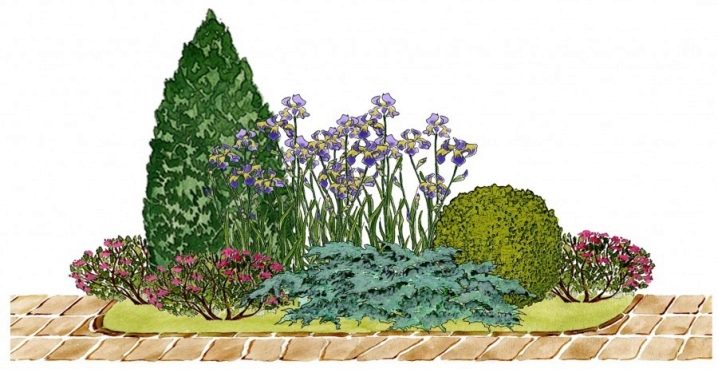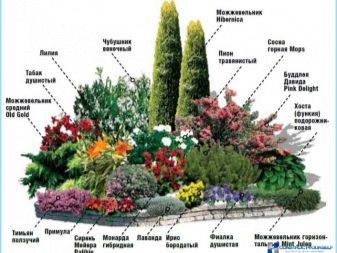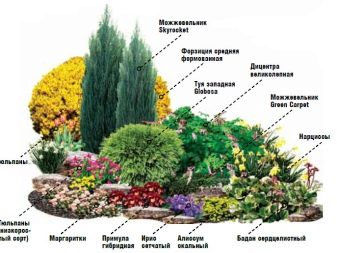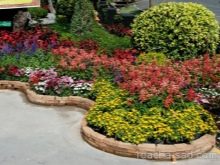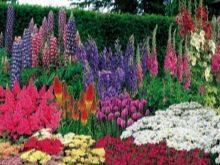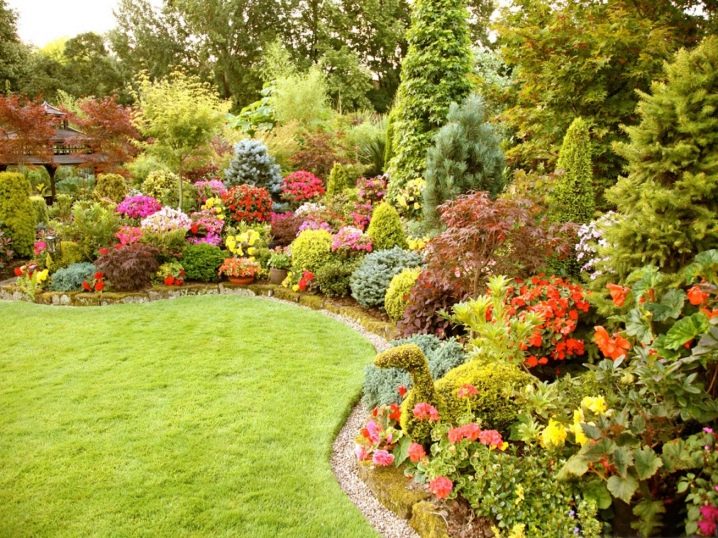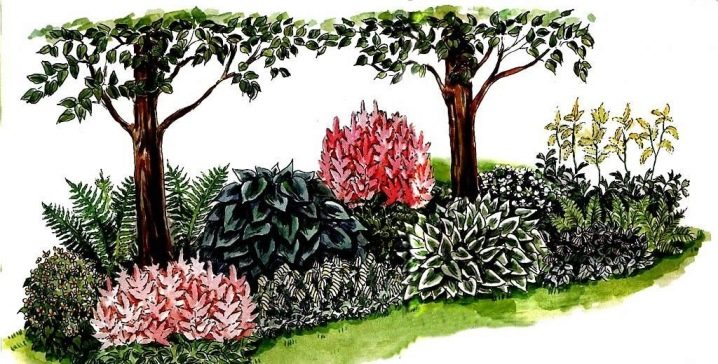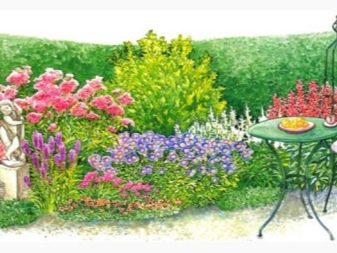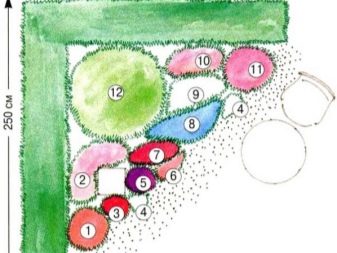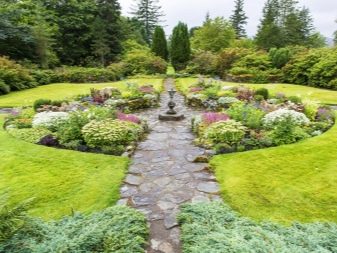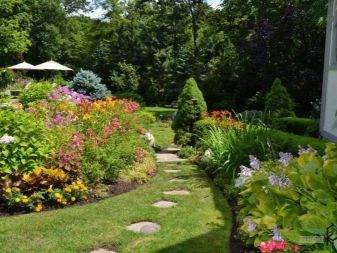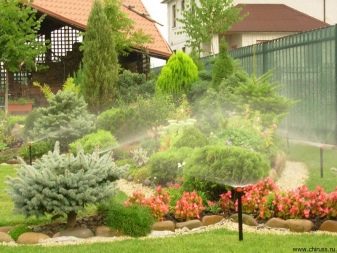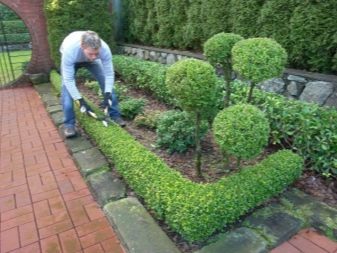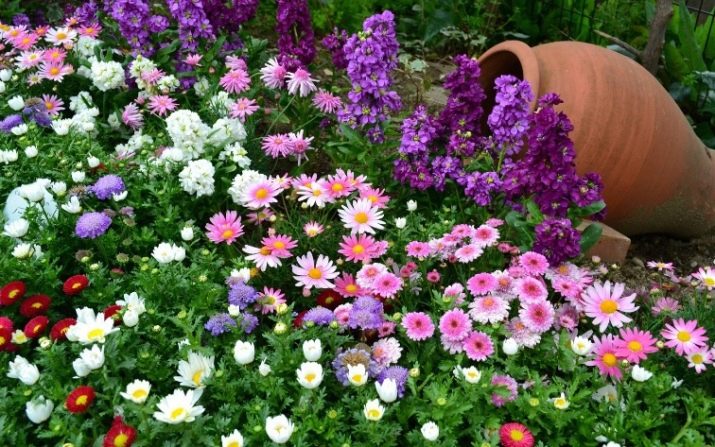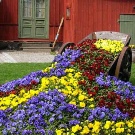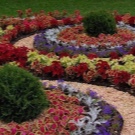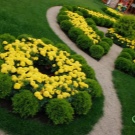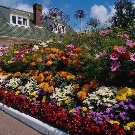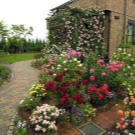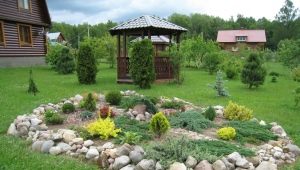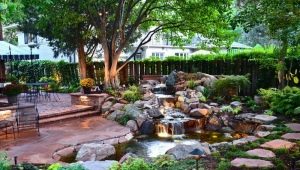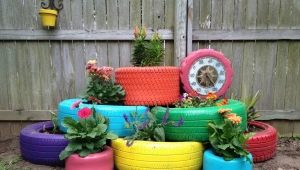Mixborders: beautiful landscape design options
The art of landscape design offers a universal solution, in which any plot, cottage or garden will look well-groomed and pleasing to the eye. This solution is called the art of combining plants, in other words - mixborder.
What it is?
In landscape design, the concept of "mixborder" is known from the XVII century. He received wide distribution in the gardens of England, but the word came from the French. This concept can be translated as "mixing boundaries." In other words, a mixborder is a complexly composed flowerbed, which may include annual, perennial plantings, shrubs, and grasses. It is distinguished by the combination of several types of green plantings, different in size, shape, color, texture of leaves. It is still popular in the suburban areas of the XXI century.
From the usual curb, that is, curb plants that border the club,or ridge miksborder differs in that the landing in it are made in a free natural style, as if this design element is growing on the site by itself. At the same time, the elements are planted according to a strictly thought-out plan and taking into account many complex nuances, which will be discussed further.
Types of mixborders
Flower garden of free combinations - this is also what this element of landscape design is called, it differs in styles and colors.
Before placing the mixborder on the site, you must decide what style it will be.
Styles can be very different:
- English or garden. The device of such a flower bed combines severity and naturalness. Figured cropped crowns of shrubs and conifers, such as boxwood or thuja, side by side with field cereal and cultural varieties of decorative flowers, such as dahlias, phloxes, peonies.
- Meadow. It assumes the abundance of natural plants that are in their natural environment, for example, flax, chamomile, cornflowers, cereal grasses.
- Country or country. In this style, abundantly planted varieties such as chrysanthemums, peonies, herbs, lemon balm, gooseberry bushes or currants are planted abundantly.
- Garden.It can be called a variant of country style. The main difference is complemented by vegetable and berry crops: strawberries, zucchini, cabbage. These plantings can be broken, for example, with orange marigolds or other decorative flowers.
- Shrub. The device of such a mixborder is very simple. It can be perennial varieties with an interesting form of foliage, flowering or evergreen, not losing its attractiveness in winter. The only caveat - if there is a tree in the planting, it should be in a single copy - as an accent.
- Collectible or mixed. The name of this style speaks for itself. In a mixborder, plants and flowers are collected that are specially selected, collected by gardeners, rare specimens. This flower bed can be called unique.
For beginners, the shrub or coniferous mixborder delivers the least trouble. For example, honeysuckle, cypress, juniper, fir, yew, boxwood, ivy. The ephedra will look elegant all year round and will not require much care.
Mixborders are divided into types also by color. Any entrance to the house will be pleasing to the eye if a flower garden is laid out next to it, in which the shades of plantings and their combination with each other are taken into account. Therefore, in the first stage It is necessary to make a project in which you need to specify the color palette of flora representatives, the time of their flowering
- Contrast look. Perfect for small plantings. It is worth to stay in contrasting colors. For example, gray and red.
- Monochrome view. It assumes planting plants of the same color, but in its different shades.
- Polychrome view. There are complimentary colors to each other, but no more than five: green as a base, white as accents, purple, purple.
With polychrome mixborder, the main part should be calm shades, and green should be the background. It is important to note that at dusk the last of the shades is “extinguished” white.
Choosing a location
Experienced gardeners note that the most advantageous location for the location of a flower garden of free compositions is hidden from the scorching rays of the sun. Designers most often plan plantings:
- along the front of the house;
- on the slope
- along the fence;
- near the tracks.
Mixborder, planted along the facade of the house, requires consideration of the height of the windows so that the upper tier does not close them. Along the perimeter of the fence green planting should be planted at a distance from each other. This will give them the opportunity to grow.
Mixed landings along fences are most common. This allows you to hide the often unsightly view of the fence, as well as visually remove the boundaries. The landscape element has a retaining wall that forms the upper "floor" of the landing.
A small flower bed is appropriate to break on the slope. It will help hide the flaws of the landscape and make them pleasing to the eye. And along the track will fit an open mixborder, viewed from all sides.
With the help of a corner element, you can solve the problem of places in the area, such as compost or angle of the fence. In other words, lush plantings will be able to disguise what you shouldn’t put up for all to see.
If the site for the most part falls on the shadow side - this is not a reason to abandon the landscape element. Bright mixborders turn out in partial shade of florawhich tolerates the absence of light. These can be: barberry, rhododendron, lily of the valley, host.
Plants
After a style has been selected, and a plan for planting has been planned, it is important to choose an assortment. Selection occurs in several categories:
- By height. Plants on the upper tier can not be above one and a half meters.If this happens, they need to be trimmed in a timely manner.
- By decoration. The selection is made in the form of leaves and flowers, their texture, color. This aspect is important to take into account that subsequently the mixborder does not look chaotic.
- By flowering time. Given this parameter, you can create a flower garden of continuous flowering, which will delight the entire season, from spring to late autumn.
- According to the features of care. Plants must tolerate the same acidity of the soil, watering and reaction to the sun's rays.
Here are some examples. When creating a mix of perennials, it is appropriate to set aside the clematis shrubs, the inflorescences of which have a delicate pink color and a number of green coniferous shrubs. On the middle ground, barberry bushes that retain dark red berries even in winter will look good. A good barberry combination will give high daylilies. Add the composition of the natural cereal, meadow cornflower will be framed to the border.
Lovers of roses can form a composition of the queen of flowers, for example, in this way: with climbing roses, which are planted on the upper tier, peonies, hydrangea bushes, phloxes, look harmoniouslycharacterized by delicate shades, suitable for the middle row. Petunia also fits to create fragrant cascades of the lower tier. Yellow marigolds can give the composition a joyful sunny mood.
Along the paths will be appropriate flower garden of vegetables. Cabbage, onions, lettuce, sunflower, medicinal herbs - all this can be combined with varietal flowers.
Designers often create mixborders from only one type. For example, hosts or pennisetum. Pennisetums like perennials reaching a height of up to 130 cm can be both plants for the upper tier and medium. Their decorative qualities are quite high due to the inflorescences with fluffy panicles of different shades.
Landing patterns
The basic rules when landing in a mixborder are reduced to the principle of the golden section. It can be clearly described as follows:
- The upper tier consists of plants from a meter to a half height.
- The middle tier has elements up to a meter high.
- The lower tier is filled with ground cover, which form a border, and greenery up to 60 cm tall.
The calculation of the zloty section is done according to the scheme:
a: b = c: d.
Where a is a form that is divided into proportional parts: b, c, d.
The top row should be filled with elements with large leaves or inflorescences. For example, long-blooming lupins, mallow, foxglove or rudbeckia, feather grass. Moreover, gardeners and designers advise miksovat plants at the time of flowering, so that the background does not look naked.
The middle row is the base mixborder, which creates pomp and volume. Therefore, it is important to plant a flora on this level, which will look after it has faded. For example, aster, chrysanthemum. It is appropriate to alternate planting with more stunted species, such as cataractus, gilch, lavender, host, heather.
The bottom row or border completes the entire composition. For him fit spirea Japanese, Boltonia, edelweiss.
When building a mixborder, it is important to consider that it should be based on skeleton landings. With their help, create the height and contour of the future flower garden. Skeletal elements should be clearly visible from the main point of view, that is, all the plants in the mixborder should be visible and not create a feeling of clutter.
You should not make mixborders too long and with sharp corners. Let it be streamlined.For the border landscape design experts advise choosing ground cover perennials and specimens with shaped leaves.
It is not easy for a beginner to make a mixborder from scratch with his own hands, and therefore there are ready-made schemes, following which you can effortlessly create a beautiful landscape element.
For example, for a plot with a shadow territory, the following scheme will do:
- The third tier is the accent tree in a single copy, around which the mixborder is assembled.
- The second tier can be filled with high fern, pennisetum or euphorbia.
- Slightly lower the blue host.
- In the lower tier to arrange saxifrage or feathers rogus
- For the border fit any ground cover or undersized flowers, such as cornflowers, pansies, marigolds.
Give up wide flower borders, which you will have to step on to reach the plants in the background.
In order to remove the corners of the plot and fill them, it is recommended to proceed according to the following scheme:
- the corner is “outlined” by shrubs whose crown is cut, for example, bushes of boxwood or barberry;
- then a coniferous or deciduous tree, for example, a dwarf willow, is planted exactly in the center of the corner;
- numbered 10 and 2 - red quinoa;
- 11 - asters;
- 9 - feather grass;
- next to number 8 - astilba pink;
- 7 - catnip;
- 6 - the violet two-horned or gentian will fit well;
- rows numbered 5 and 3 can occupy specimens from 40 to 60 cm in height, for example, echinacea and phloxes;
- number 4 - carnation travyanka or saxifrage, and at number 1 - peonies or daylilies.
If there is a fountain or other small architectural form on the site, the height of the third tier should not be higher than the structure and block the objects. To grow flowers and plants in large mixborders to be convenient, you can make small tracks like a “goose pitch” inside the element.
If “holes” remain in the mixborder, they can be filled with creeping short-growing perennials.
Care instructions
Landings that do not require careful maintenance will certainly save the gardener's strength, but even for them, there is a minimum, without which the mixborder will quickly wither:
- Watering. If green spaces are not well rooted, they need regular watering, of course, taking into account the weather. This is best done in the evening or in the morning. Perennial shrubs, provided they are adult specimens, will need up to 10 liters of water. If the mixborder is arranged under a large tree, it is worth considering that its roots "take" water from flowers, which means that they need additional moisture.Irrigation is best done from a watering can, so that water does not wash off the soil.
- Loosening the soil. So that after watering the land does not form lumps, the soil must be loosened as soon as it dries. After processing, gardeners are advised to compost the land. As soon as the flora grows, soil loosening can be stopped.
- Weed removal. This scourge of all gardeners prevents planting properly grow, eat, and the flower garden quickly loses its presentable appearance. Weeds can be removed when loosening the soil, and tall specimens should be gently removed by hand from the root, but so as not to damage the culture in the mixborder. Herbicides in weed control should not be used, otherwise they will harm the main crops.
- During flowering fertilization is necessary. Twenty or thirty grams per ten liters of water. Fertilizers containing potassium and phosphorus are applied in the middle of summer. In the fall and spring, a mixborder requires feeding with mulch or compost. If, after wintering, the plants are “frozen”, in the spring shoots can be sprayed with a growth stimulator. For example, epin.
- Pest control. Reducing the risk of disease will help manure, as well as chemicals.
- Pruning dry leaves, inflorescences and branches.Old and weak shoots are important to remove in early spring. During the whole season to clean dry inflorescences that spoil the appearance. Shrubs requiring pruning should be shortened or shaped to crowns.
Beautiful examples
According to landscape designers, mixborders are the most popular elements in order to create a beautiful site and transform a garden. To create such a flower bed is quite simple, if you follow the tips and rules. Below are beautiful examples of mixborders that can push on new fresh ideas.
Mixborder can be designed not only the angle of the plot, the original flower garden can be with a fountain, from one type of plant, with a goose step, planted on the shady side. English, meadow, from perennials, as well as from a large number of tiers, from pennisetums, and even collection looks interesting.
So, following the tips of this article, you can see that it’s not so difficult to create your own gorgeous flowered mixborder. The most important thing is to prepare first of all, that is, to draw up a mixborder plan, take into account flowering and peculiarities of care, pick up the assortment, and then further work will bring only joy.
All the subtleties of creating flower beds, mixborders and other tips of landscape designers, see the following video.
